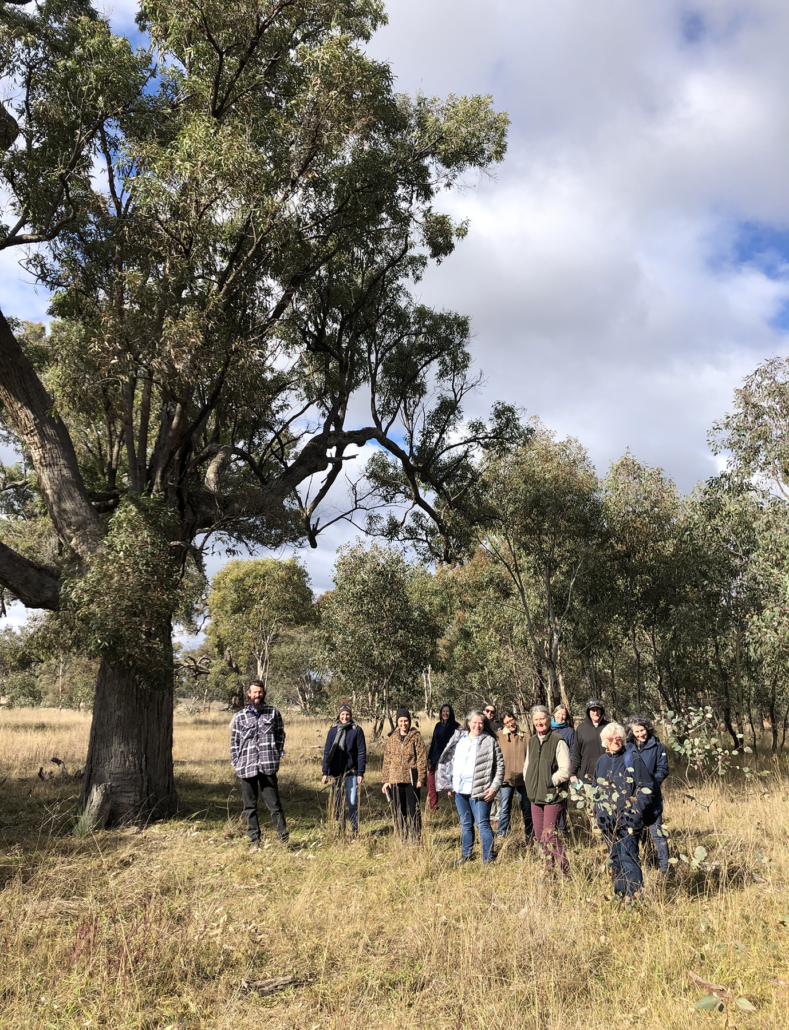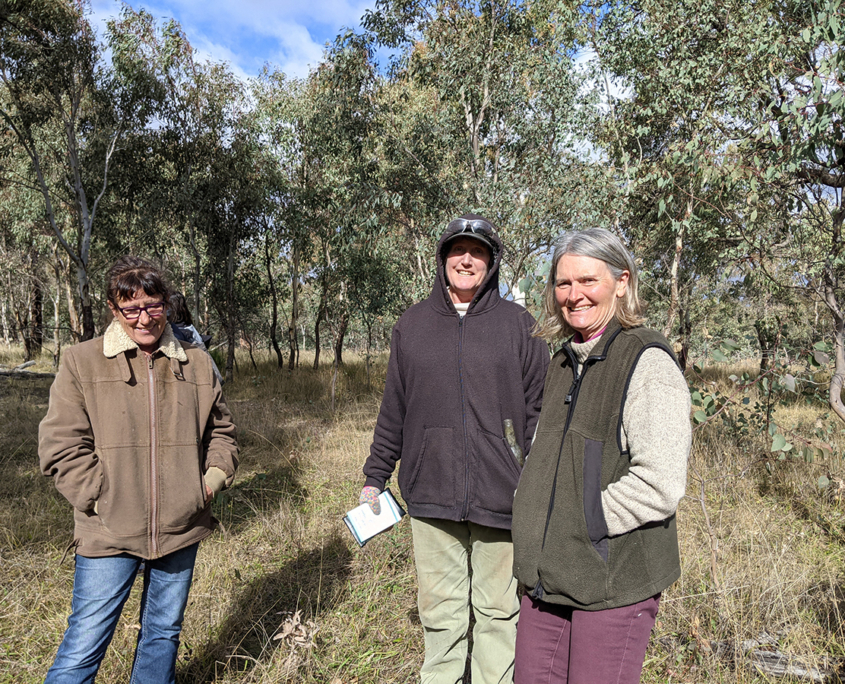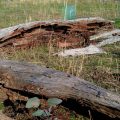Patches & Paths – Box Gum Grassy Woodland Workshop
in June 2021 Watershed Landcare hosted a presentation by Dan Florance from Sustainable Farms as a part of the Patches and Paths initiative about Box Gum Grassy Woodland. Box Gum Grassy Woodlands (BGGW) is the name given to the endangered ecological community, dominated by White Box, Yellow Box and Blakely’s Red Gum, and typically characterised by a sparse shrub layer with a diverse mix of native grasses, herbs, and orchids.
Today less than 4% of Box Gum Grassy Woodlands remain! Scattered old paddock trees are a familiar sight in the landscape, but it is hard to imagine these remnants were once part of a vast network of woodland spreading along the western slopes and tablelands of the Great Dividing Range. So, where did they go? BGGW are native to productive clay loam soils, which have now been mostly cleared for agriculture.

Many old, hollow-bearing trees are now isolated, under stress, or reaching the end of their life span. Natural regeneration is rare because so much of the BGGW have been converted to crops and pastures. It’s time for us as land managers to step in.
Hollow bearing trees are critical, providing habitat for an incredible number of insects, birds, reptiles, and mammals. These trees cannot be replaced in the short-medium term and need to be protected from the excess nutrients and compaction from livestock camps, spray drift, and soil cultivation close to their root system.
Dan highlighted that the regeneration of these areas could provide substantial benefits to farms and local landscapes, such as increased drought resilience, shelter for stock and crops, increased pollination, and habitat.
It’s essential to safeguard existing remnant trees as a priority by fencing to exclude stock. Fencing will protect the tree’s root zones and allow natural regeneration. Consider how existing woodland and isolated old-growth trees might be reconnected with plantings, ensuring to select a diversity of native grass, shrub, and tree species where possible. When planning out the spacing of new plantings, make sure to account for trees’ height and width once they reach a mature age to avoid competition as they grow.

Watershed Landcare members enjoying the sun at the Box Gum Grassy Woodland Workshop in June 2021
Landholders might notice some areas naturally regenerate when stock pressure is lifted; this re-growth can be secured easily with fencing or with individual tree guards. We encourage people to use recycled materials where possible.
Something overlooked is the value of dead trees that still provide valuable habitat, especially if hollows are present. So, where possible, retain dead trees, fallen branches, and bush rock. If you must move them, consider relocating to an area where animals and insects can still use them for their habitat.
If you have a site you’re thinking of regenerating or have identified existing remnant trees you want to protect, get in touch with us at Watershed Landcare. We can provide resources and support to help protect the future of Box Gum Grassy Woodlands in our beautiful region.





